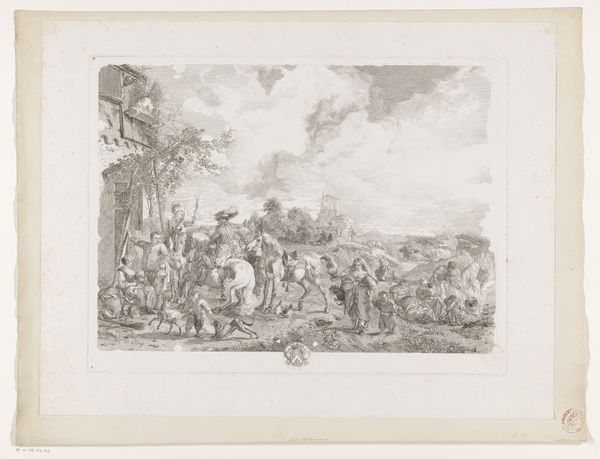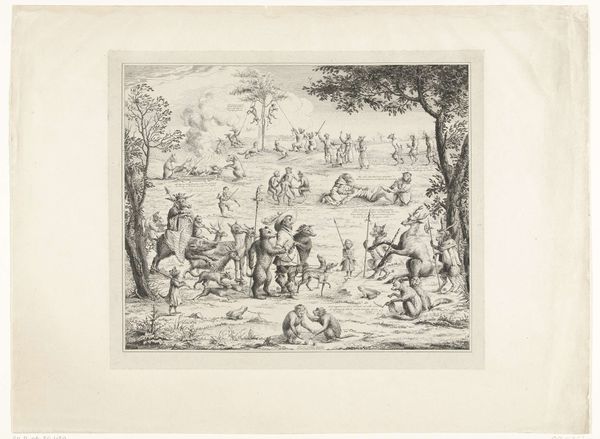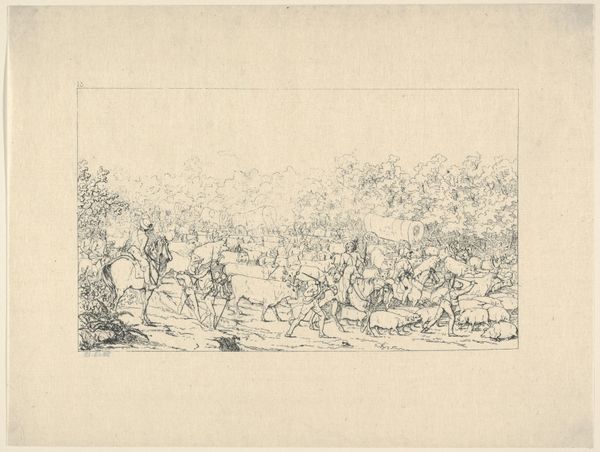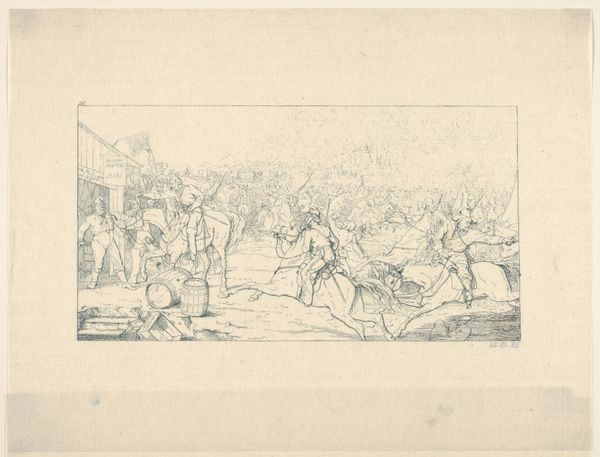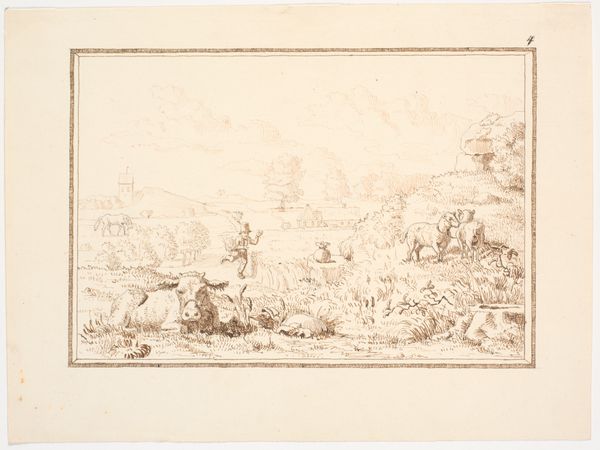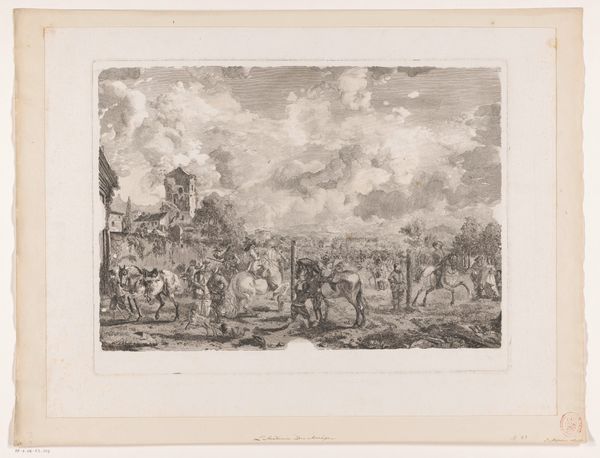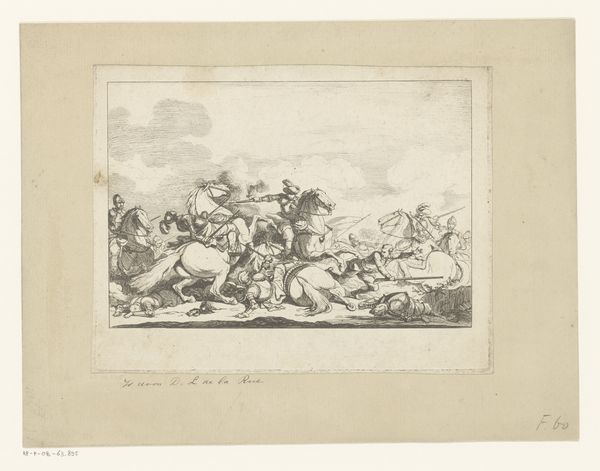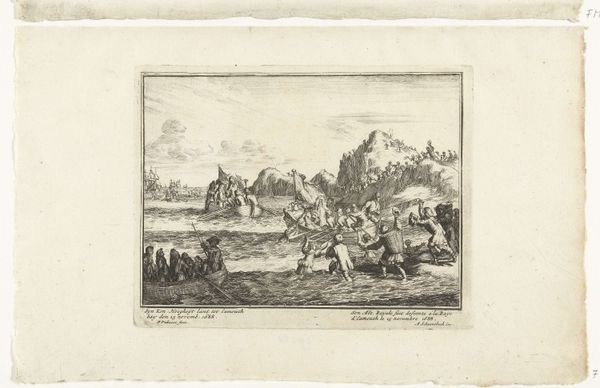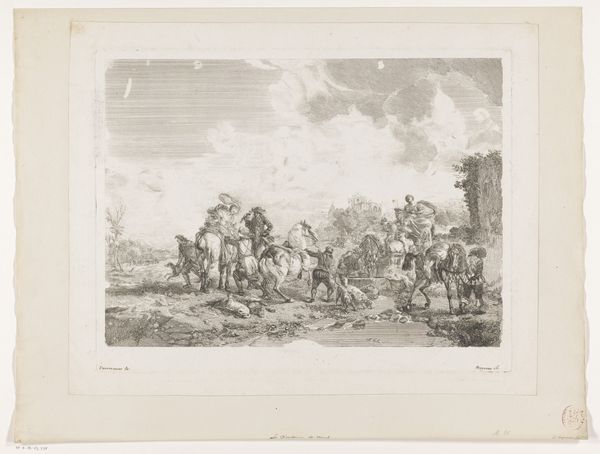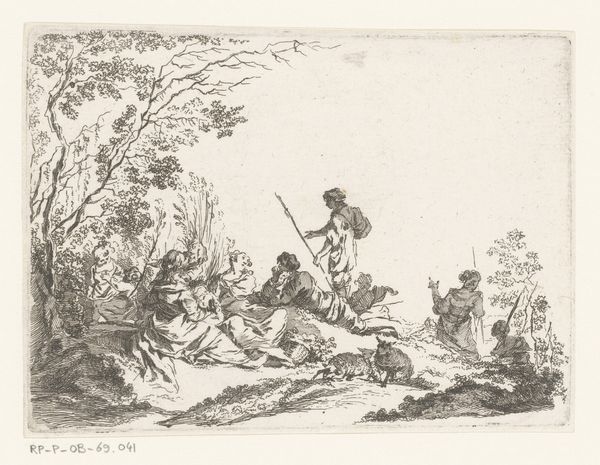
drawing, etching, ink, pen
#
drawing
#
etching
#
old engraving style
#
landscape
#
ink
#
pen
#
genre-painting
Dimensions: height 155 mm, width 235 mm
Copyright: Rijks Museum: Open Domain
Curator: This lively scene, "Zwijnenjacht," or "Boar Hunt," was created sometime between 1800 and 1841, and is attributed to Joannes Bemme. The Rijksmuseum holds it. It employs etching, pen, and ink in its creation. What’s your initial take on this busy scene? Editor: Chaotic. It's got an almost frenetic energy, despite the limitations of the etching style. So many bodies—human, canine, porcine—in such a shallow space! What story is being told here, exactly, beyond just the obvious hunt? Curator: Well, given the period and subject matter, it speaks volumes about class and land ownership. Hunting was, of course, a pastime heavily associated with the aristocracy. Looking closely at the composition, you see the landscape functioning as more than mere backdrop, practically legitimizing the social hierarchy depicted in the hunt itself. The very act of pursuing and killing animals underscores human dominance, echoing existing societal power structures. Editor: I think there’s also a reading to be done about the violence inherent in the scene. Note the way the dogs are almost indistinguishable from the wild boar; all are simply reduced to bodies in motion, enacting a spectacle of bloodlust. The labor of those less visibly centered in the hunting activity must be acknowledged. And I suspect it's very intentional—serving both as entertainment for those on horseback and as a display of dominance over the natural world and those who might work it. Curator: Exactly. The work involved in setting up a hunt like this – the labor involved—is all but erased from the central image of gentlemanly sport. Even the materials themselves have a class association. Ink and etching were relatively accessible printmaking methods, allowing for wider distribution of imagery reinforcing those hierarchies. And look closely: not all the human figures are riding. Those on foot surely had a hand in beating the bushes to get the boar into open range. Editor: Thinking about access...while this image might depict leisure and land access for a privileged few, its distribution via prints makes it available to a much wider audience. And this distribution plays a key role. We can't overlook how such images may normalize or even idealize potentially problematic hierarchies, which reinforces that class division. Curator: A nuanced, complicated reading—I concur. So, here we are with Joannes Bemme’s print "Zwijnenjacht," in all its chaotic glory! It really encapsulates its epoch and reveals subtle intricacies if observed in just the correct manner. Editor: It's fascinating how much social commentary is embedded within a seemingly straightforward genre scene. Now I will never look at these types of hunting scenes without considering power relations.
Comments
No comments
Be the first to comment and join the conversation on the ultimate creative platform.
